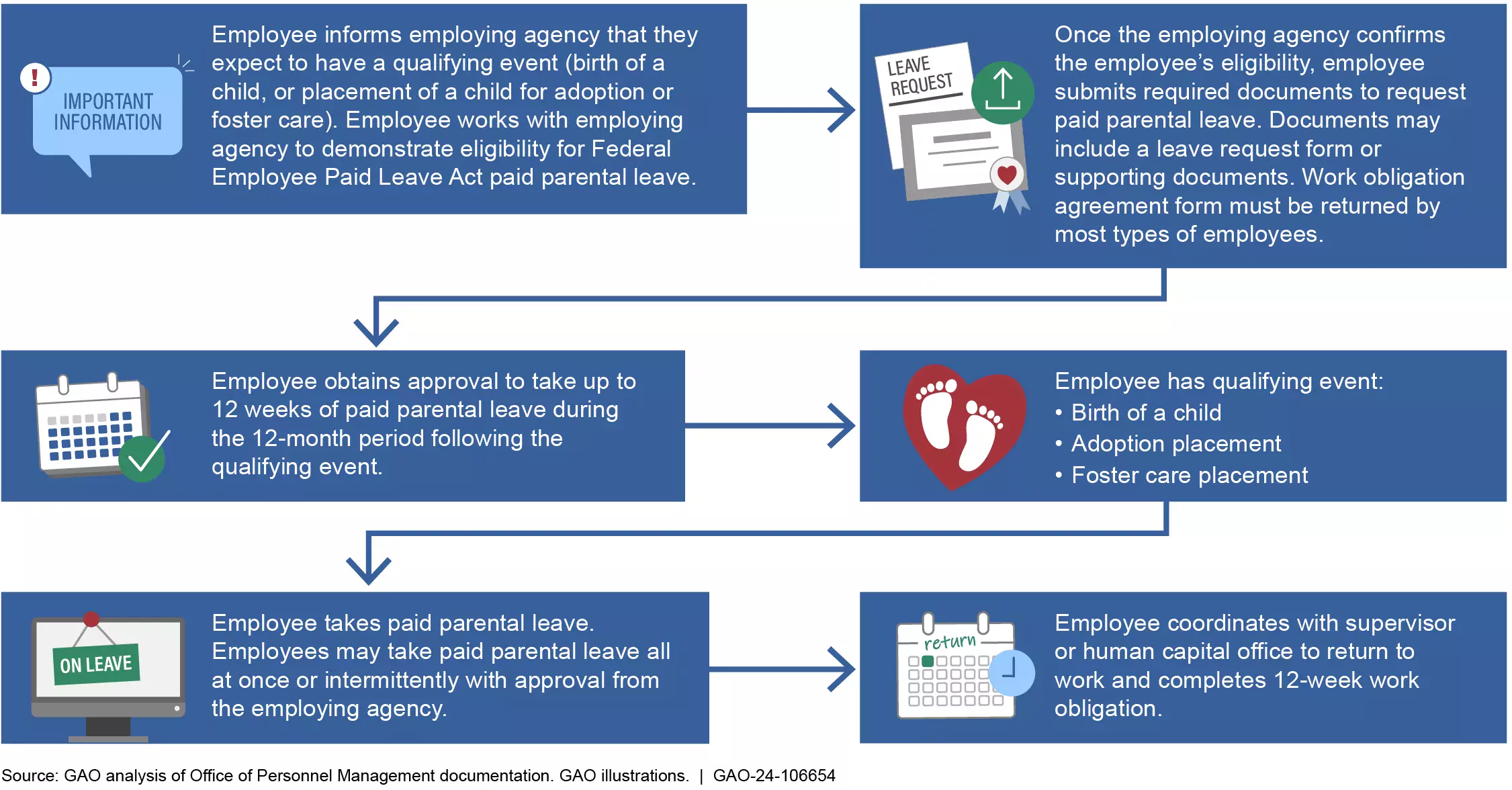
The first months of a baby’s life are an important period to build bonds between parents and child. Because of this, many new parents take maternity or paternity leave —also known as family leave—from work during those initial months of welcoming a new family member. Paid family leave wasn’t offered to most federal employees until recently. But beginning in October 2020, most are eligible to take up to 12 weeks of paid parental leave for the arrival of a new child whether by birth, adoption, or foster care.
This change has many benefits—not only to families but also to the federal government. It can help make federal employment more attractive to job seekers and improve employee morale and retention. However, in a new report, we found that more could be done to make current and prospective employees aware of this benefit.
Today’s WatchBlog post looks at our new report on federal paid parental leave and the need to increase awareness about it.

Who is eligible for federal paid parental leave?
The Federal Employee Paid Leave Act of 2019 (FEPLA) provided a new paid parental leave benefit to most (but not all) federal civilian employees.
In 2021, Congress extended the benefit to other groups of federal employees not initially covered—such as some employees at the Federal Aviation Administration and Transportation Security Administration. Certain federal employees are not eligible for paid family leave, such as U.S. Postal Service and Postal Regulatory Commission employees. They remain ineligible for FEPLA paid parental leave because they were not included in updates to the law.
It’s estimated that around 3% of the roughly 2 million covered federal employees would welcome a new child—whether by birth, adoption, or foster care—in a year, according to the Office of Personnel Management (OPM). The total salary paid to those employees, for the full 12 weeks of paid parental leave, would be about $995 million government-wide per year.
Federal employee survey results show paid parental leave is having some of its intended effects. For example, in 2022, most federal employees who used paid parental leave took the full 12 weeks. The leave also influenced the decision of many employees aged 40 and younger to remain in the federal government, according to a 2021 survey.
Even so, as stated above—after 3 years, some federal employees and potential job seekers may not know about this benefit.
Example of Process for Requesting and Taking Paid Parental Leave

More could be done to let employees know about this benefit
OPM has issued guidance to help agencies implement the paid parental leave program. But, in our new report, we found it could do more to spread the word. For example, we found that OPM’s webpage included outdated information, some of it almost a decade old. This outdated information included guidance for employees to request unpaid leave upon the arrival of a new child (which was the previous rule), rather than paid parental leave available to federal employees now.
OPM could help raise awareness of this program by updating the relevant documents on its webpage. This will help ensure that agencies and federal employees have the information they need to determine paid parental leave eligibility and obtain it. We recommended that OPM update the guidance on its webpage to include current and accurate paid parental leave information.
Learn more about our work on paid parental leave by checking out our new report.